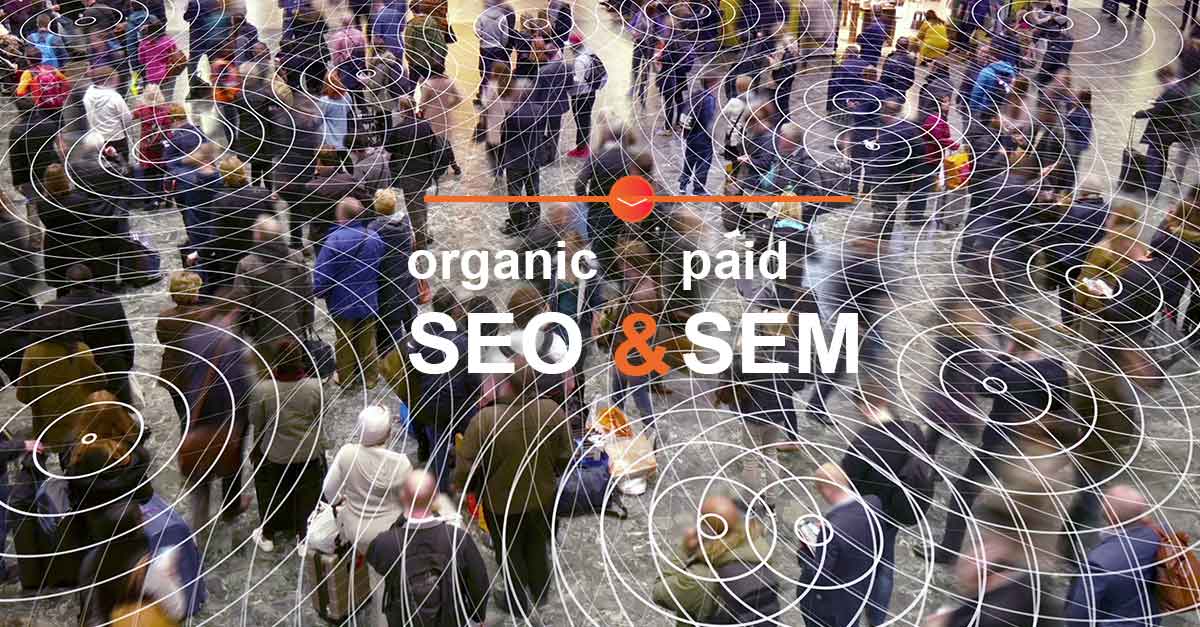Are your SEO and SEM strategies working in silos? There are several low-cost ways SEO and SEM (Google AdWords PPC) can combine efforts to improve marketers digital strategies and drive more conversions/leads online.

Google continues to tweak how online Users receive content through organic and paid listings. In order to meet the demands of today’s search landscape and connect with more qualified Users, strategists need to create campaigns that treat SEO and SEM as a unified silo, as opposed to separate disciplines.

Integrating SEO with SEM can reduce costs while increasing results
Developing digital marketing campaigns that combine SEO with SEM is not only necessary for achieving prime listing positions, it’s now the only way to maximise traffic and conversion opportunities.
The following overview's the findings of a Fortune 500 brand that specialises in home care (B2C), who were developing comprehensive, complex digital campaigns that focused on User behavior alignment and conversion optimisation.
When the digital team made the effort to combine both SEO and SEM strategies/data, they were able to identify a multitude of critical data points dedicated to User behavior, intentions and location/geography.
This level of precision allowed them to:
- modify their organic keyword strategy so that they could create and optimise new content to rank within specific geographic locations, applying exact phrases used by their target audience to align with User intentions - at low-cost or no-cost;
- adjust their SEM budgets down so that they were only running ads within the most popular markets and effective time frames;
- and align their SEM ads with Users offline marketing schedule to maximise awareness and conversions.
Overall, these actions resulted in:
- 30-percent increase in organic traffic
- 25-percent increase in paid clicks
- 35-percent savings in ad spend
- 20-percent increase in quarterly profits
Share keyword data to increase the intelligence of your digital campaigns

Review the following ways that SEO and SEM can combine efforts to improve their strategies, as well as to drive conversions/B2B leads like never before.
We all know Keywords are the foundation for any successful SEO or SEM campaign!
For SEM strategists, keywords are used to facilitate creative relationships with Users who are located further down the conversion – B2C or B2B – funnel (closer to a buying moment).
In the world of SEO, keywords are used to dictate the information architecture of a website, as well as its content strategy – make the landing pages more relevant to the User and Google will reward you.
Because more Users are using long-tail phrases and complete sentences when searching than ever before, keyword data must be shared across both SEO and SEM in order to offer coordinated messages that keep brands top-of-mind and solicit qualified conversions/leads.
Set shared goals and combine metrics and watch multichannels improve
Using the information from SEO and SEM findings doesn’t just offer more accuracy around User behavior; it can also be used to support your brand’s inbound marketing campaigns – B2B especially.
Marketers that combine their SEM data with organic User engagement metrics (e.g., average session duration, bounce rate, pages per session) are able to gain unique insight around how Users are interacting with certain digital properties, as well as how they behave once they leave your site.

The SEO and SEM metrics used to establish key performance indicators (KPIs) should be almost identical. When this happens, marketers are able to apply this information to other marketing channels like banner ads, social media or email marketing.
Remove silos to improve production
Approaching SEO and SEM as two separate silos isolates critical information and diminishes the productivity level of even the most well-executed online campaigns.
It almost never makes sense to keep these two disciplines apart, as each channel can offer the other particular points of information that are vital for identifying and fulfilling conversion/leads opportunities.
Use data that informs multichannel decisions and justifies action
When it comes to gathering enough actionable data to develop robust, intelligent strategies, extracting information from one specific field, like SEO or SEM, is not enough.
Although the quality of marketers organic data may provide insight on how to create functional plans, the amount of verified information organic search can capture may not be sufficient to justify real action – or build a business case for senior management to increase online budgets.
Conversely, information that’s gathered from the search engines themselves as a result of paid search activity is both valuable and based on a substantial sample size that allows marketers to move forward confidently.
If your organisation treats SEO and SEM as two distinct entities, try to make sure that your efforts are aligned through shared:
- reporting;
- objectives; and
- communication portals.
The goal of merging both disciplines together is to increase internal awareness of key conversion opportunities.
Action & impact: how to maximise SERP visibility
Understanding the principles that allow marketers SEO and SEM strategies to work together efficiently, marketers can employ the following tactics to 'own as much real estate' within Google SERPs as possible.
1. Landing page optimisation
Optimising landing pages to drive qualified traffic and conversions is a fundamental component of any digital marketing campaign. SEO findings can provide SEM with critical information around User intentions, objectives and demands to reduce bounce rate and increase click-through-rates (CTR).
SEM insights around User online activity can perpetuate paid ads that only appear in front of the most qualified Users possible.
By doing this, both SEO and SEM are able to support each other in ways that improve User experience, maximise relevant traffic and reduce wasted ad spend.
2. Approach SEO & SEM holistically
Running paid ad campaigns that 1) offer precise messages and 2) are located next to your organic listings on Google can increase overall CTR and lead to a higher return on your investment.
This type of positioning is extremely effective for creating the sense, for Google alogorithm, that your brand is more relevant to Users than your competitors and thus, more credible and prominant.
3. Understand seasonality
Share seasonal data and information relating to other offline variables to learn how to approach and optimise for specific times throughout the year when User activity peaks.
Use this information to create a calendar of events that guides you on how to:
- create organic content that aligns with specific Users within specific locations;
- run paid ads that contain unique messaging based on location and intention;
- maximise brand awareness during peak activity points;
- and increase User reaction and conversions/leads during seasonal low points.
4. Get in front of the competition
SEO and SEM should work together as a cohesive unit to share key points of information that highlight how and what the competition is doing from a digital perspective.
Create monitoring systems that identify your competitors in terms of:
- positioning within SERPs; pricing;
- key message points/branding initiatives;
- and primary and secondary keyword terms.
Use this information to adjust your ad spend, to improve CTR and to outrank your opponents by taking up more real estate within SERPs.
Get found online today!

MindWorks Google AdWords service includes Account set up, Text and Display Ad Campaign creation, Conversion Tracking, Google Shopping set up, Testing, Remarketing, Success Metrics included in Monthly reporting

MindWorks SEO service includes Keywords Strategy and implementation (meta tags, Descriptions, Titles), Competitor Keyword analysis, Monthly reporting
The MindWorks difference
MindWorks Data. Digital. Direct. Social experience has proven that only ‘best practice’ Direct Marketing – the merging of Intelligent Data insights with Relevant and Engaging creative, a mapped multi-touchpoint Customer Conversion Pathway across mobile, web, social, mail, search, phone and traditional media - that follows a Measurable implementation strategy can equip marketing teams to build loyal relationships with their customers and a sustainable lift in results …
